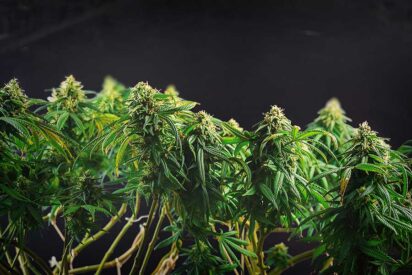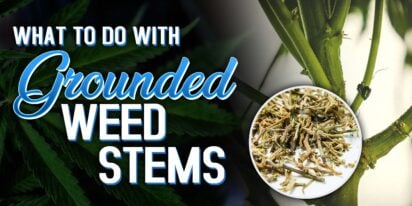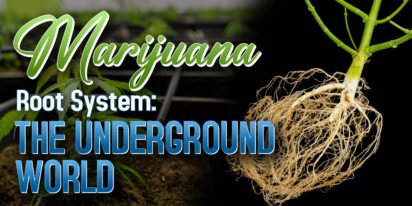
Are You 18 Or Over?
YesOr
No By clicking yes, you certify that you are over 18. By using this website, you agree to our legal disclaimer.605+ Cannabis Strains over 20 Breeders worldwide.
Table of Contents

Nearly anyone who wanted to grow crops or homes livestock for a living practices the ancient art of selective breeding. Those who aren’t willingly put themselves at a significant disadvantage and break with an established standard, or to use the more up-to-date method in cultivation.
Cautiously breeding plants or livestock to reduce or eliminate such characteristics and magnify others; in the development of a better plant, a very tasty fruit with high yields and good pest and blight resistance is something that has been done for centuries due to its great significance.
And what freaks out some people and some nations, including Europe, to ban GMO crops.
Whereas others, chief among them the United States, to accept warmly lab-honed crops, are that you can breed a certain gene in or out of one generation instead of 20.
Genetic feminized seeds are seeds produced in a way that maximizes the likelihood of female plants being the resulting cannabis plants. Or, it induces a normal female and not a hermaphrodite. This is essential because only female cannabis is capable of producing buds, which for most growers, is the main concern and the best beauty of it. The rate of success is labeled as about 99 percent, depending on the seeds you buy (you need to take some precautions in buying). This ensures that feminized plants can produce the expected results efficiently and effectively. Thus, saving you from more works or needed to accomplished strategies.
“Feminized seeds are genetically engineered,” this is a common myth that worries some growers, but it is important to distinguish between “engineered” and “modified.” Therefore, let us define what is “genetically engineered” and “genetically modified.”
Genetic engineering involves the introduction of DNA into other species, such as lettuce and bean connections. Genetic modification, on the other hand, includes modifying the breeding process, which can occur naturally, ensuring that the whole system stays normal.
Cannabis has been genetically engineered for the underground and medical markets, but not using the modern methods that get called “GMO.” The alteration of cannabis genetics accomplished by combining traditional breeding methods with sloppy, “old-school” techniques such as chemical mutagenesis and induced polyploidy.
In other words, different business people used toxic substances to cause genetic changes, or used colchicine to induce the plants to double the number of chromosomes in each cell. Some of these plants were growing better and/or producing more THC. Modern marijuana is, therefore, so much more powerful.
We can conclude that some marijuana strains or companies already genetically engineered some feminized Cannabis Seeds. Even though it is not surprising to know that, we should by far say that it is normal in this new era.
Genetic engineering techniques are used only when all other techniques have been exhausted, i.e., when the feature to be introduced is not present in the crop’s germplasm; the feature is very difficult to improve by conventional breeding methods. And when it takes a very long time for conventional breeding methods to introduce and/or improve this feature in the crop.
Genetically engineered plants are commonly referred to as transgenic crops or GM crops. Current plant breeding is a multidisciplinary and organized system in which a large number of methods and elements are used and incorporated into conventional breeding techniques, bioinformatics, molecular genetics, molecular biology, and genetic engineering.
Conventional Breeding |
Genetic Engineering |
| § Limited to exchanges between the same or very closely related species.
§ Little or no guarantee of any particular gene combination from the million of crosses generated. § Undesirable genes can be transferred along with desirable genes. § It takes a long time to achieve the desired results. |
§ It allows the direct transfer of one or just a few genes, between either closely or distantly related organisms.
§ Crop improvement can be achieved in a shorter time compared to conventional breeding. § Allows plants to be modified by removing or switching off particular genes. |
And now, let’s bring some of the benefits and disadvantages of a genetically engineered seed.
But here comes another real question is the rising of the other type of altering the genes, the “Genetically Modified Organism,” which is by far different on to genetically engineered.
And since cannabis Sativa, both the taxonomic definition of recreational marijuana and the source material for CBD, is one of the hottest agricultural product in the word, the obvious answer to the obvious question: “Is there GMO weed?” It’s almost certainly yes, and there some stories about it.
Genetically modified crops are almost unheard of outside traditional industrial farming and are not currently available to the home gardener. The industry is highly regulated, and the alteration is the point of sale of such seeds. It would be almost impossible to buy Genetically Modified seeds erroneously.
Pharmaceutical companies are the first people wanting to produce GM weed; they have the cash to make that possible. They are on a wave’s edge as medical marijuana begins entering conventional medicine. At the moment this industry has an annual valuation of just hundreds of millions, but this business will grow exponentially, in a few years I expect the drug market for marijuana medical drugs to be worth literally billion, as cannabis starts to enter the mainstream medicine of pain relief, MS, ADHD, sleep problems, insomnia, cancer treatment, etc.
Genetically Modified marijuana could be produced to expand into large plants in the “leaf” form that could produce enormous amounts of harvest over perhaps several years. Nonetheless, if and when the pharmaceutical companies begin to realize the true financial medicinal promise of ganja, Genetically Modified hemp will be pursued objectively.
Genetic feminized Cannabis Seeds could be genetically modified by modifying individual genes and specific parts of plant DNA in a way that specifically promotes the development of certain cannabinoid compounds. Natural cannabis contains more than 85 cannabinoid compounds, the most common of which is THC.
Pharmaceutical companies would find they have to persuade everyone that it is not possible to achieve the effects of a unique cannabis drug with regular plants. We will cultivate their own raw materials by embracing medical marijuana and use the various active ingredients of different medicines in different combinations. It is the perfect business model, a raw product that is easy and cheap to cultivate and numerous drugs, all with very little prices.
Pharmaceutical companies will invest heavily in the genetic engineering of a marijuana plant that generates ultra-high levels of the entire range of cannabinoid chemicals. The aim will be to remove and separate them from thousands of tons of bud into individual cannabinoids on an industrial scale.
I expect to find their way into drugs for very specific medical reasons until single cannabinoids are isolated. This is the only way to eliminate the “risk” of imported cannabis to pharmaceutical companies; they will simply say their formulations are more successful because they are more advanced.
Meanwhile, through working with growing cooperatives, the traditional cannabis seed breeders will continue to make the most useful contributions to the medical marijuana movement. Personally, I am sure that all marijuana is medically effective, but there are some strains that the medical users of marijuana often know better.
So maybe in the not-too-distant future, we’ll see genetically modified cannabis. I think it’s going to take five years to get the confidence to reveal plans to try it, and another five years to show us the results.
I’m sure the medical marijuana campaign will be very interested, but have you ever thought what might be the consequences and interactions for the average stoner? Can Genetically Modify marijuana offer you weed that is radically different from what we enjoy today? Maybe weeds that don’t stink when you cultivate them, or weeds with a different buzz? As ridiculous as these questions sound, I plan on them being posed for real one day.

[ez-toc] In indoor gardening, maintaining an optimal temperature within your grow tent is crucial for the health and productivity of your plant

[ez-toc] Welcome to the delightful world of cannafudge crafting, where sweetness meets sophistication, and cannabis infusion adds a unique twis

[ez-toc] You’ve finished trimming your weed, but what about those leftover stems? Don’t throw them away! These seemingly useless bits can a

Feeling high can be an exhilarating experience, but it's essential to make the most of it by engaging in activities that enhance the sensation a

[ez-toc] Starting with planting cannabis seeds might seem simple, but how deep should cannabis seeds be planted for them to grow well. In this

[ez-toc] In the realm of cultivating cannabis, maximizing growth during the flowering stage is a top priority for growers. While various method

[ez-toc] Nutrient burn is a common issue among plant enthusiasts, often resulting from over-fertilization or improper nutrient application. It

[ez-toc] Welcome to our complete guide to dealing with harmful pathogenic mold in cannabis. For those who grow cannabis, preventing mold is vit

In recent years, there has been speculation about “did Shakespeare smoke weed?” This idea originates from a study by South African anthropol

[ez-toc] Welcome to the hidden world beneath the soil – the inside of the marijuana root system. While the vibrant leaves and resinous flower

Are You 18 Or Over?
YesOr
No By clicking yes, you certify that you are over 18. By using this website, you agree to our legal disclaimer.